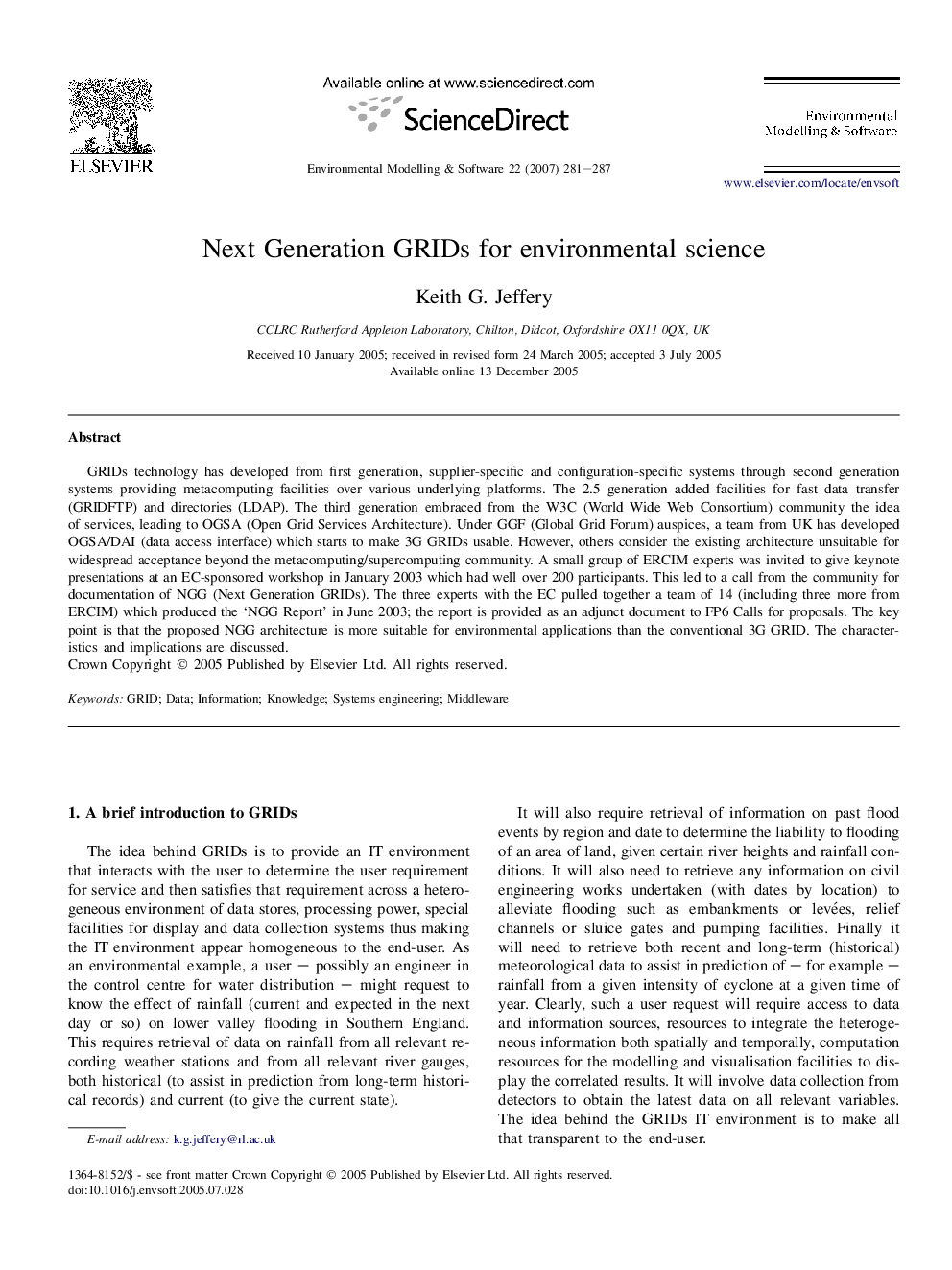| Article ID | Journal | Published Year | Pages | File Type |
|---|---|---|---|---|
| 568848 | Environmental Modelling & Software | 2007 | 7 Pages |
GRIDs technology has developed from first generation, supplier-specific and configuration-specific systems through second generation systems providing metacomputing facilities over various underlying platforms. The 2.5 generation added facilities for fast data transfer (GRIDFTP) and directories (LDAP). The third generation embraced from the W3C (World Wide Web Consortium) community the idea of services, leading to OGSA (Open Grid Services Architecture). Under GGF (Global Grid Forum) auspices, a team from UK has developed OGSA/DAI (data access interface) which starts to make 3G GRIDs usable. However, others consider the existing architecture unsuitable for widespread acceptance beyond the metacomputing/supercomputing community. A small group of ERCIM experts was invited to give keynote presentations at an EC-sponsored workshop in January 2003 which had well over 200 participants. This led to a call from the community for documentation of NGG (Next Generation GRIDs). The three experts with the EC pulled together a team of 14 (including three more from ERCIM) which produced the ‘NGG Report’ in June 2003; the report is provided as an adjunct document to FP6 Calls for proposals. The key point is that the proposed NGG architecture is more suitable for environmental applications than the conventional 3G GRID. The characteristics and implications are discussed.
